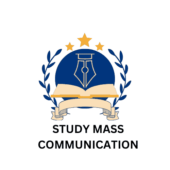Editorial Policy
Editorial Policy | One of the most significant, well-known, and contentious duties of The Channels editors is writing editorials. College leaders read editorials to find out what the smartest, most knowledgeable people are doing, from instructors and students to important administrators.
Students speak up for important topics on campus. The editorial writer bears immense responsibility for the enormous power it possesses to shape public opinion and policy.
An editorial is typically a strongly worded opinion piece intended to educate or influence. An editorial writer should conduct in-depth study, comprehend all sides of a topic, and then use this knowledge to craft a persuasive perspective. The editorial writer should aim for a kind and equitable tone even when they disagree. | Editorial Policy
Editorial stances and subjects are decided upon by consensus among the
The following guidelines should be considered in the development of editorials:
Types of editorials
Persuasive—meant to influence readers or policymakers, to urge them to take a particular stand. Explanatory or Analysis—still opinion, but mostly casts new light on ongoing issues. Localization of state or federal issues good example of this.
Obituary—laudatory. Commentary on a person leaving public service is a similar type. | Editorial Policy
Endorsement—in political races. Goals of editorials To make people think To influence policymakers, to sway a pending decision by a government agency. To localize issues for readers, to bring them home for them, and give them relevance.
Organization. ( Editorial Policy )
Editorials are composed in an easy-to-read, straightforward, and convincing style. They should typically measure around 12″. The editorial board must authorize longer editorials.
The editorial begins powerfully and ends purposefully. A premise or strongly written opinion should come first, and the conclusion should reiterate the premise.
An editorial essay fails if the reader is left wondering or having to look up the writer’s point of view.
Provide data, facts, and figures in the body to back up your position. You can make general references to earlier news articles. Give evidence and facts to back up your claims. In the limited space, the facts (proof) should be as comprehensive as feasible. Even if you use new language, try not to reiterate arguments throughout the body of the text. | Editorial Policy
The best editorials accept the other point of view and then use good logic to disprove it. Since there are no right or wrong answers in editorial writing, a knowledgeable writer would acknowledge the value of opposing viewpoints.
End with a statement that emphasizes the main idea. When an editorial contains criticism, the author ought to offer a remedy or implore the reader to take action. | Editorial Policy
Additional rules
Editorials ought to be predicated on occurrences on campus that have already been covered by The Channels’ news column. If it were not for this, the editorial column would become a vehicle for reporting rather than serving as a platform for analysis, commentary, and opinion. When sporadic publication dates need it, an editorial may appear concurrently with a news item it comments on.
Recall the recipient of your letter and provide a thorough explanation. Make careful to quickly restate the topics on which you are expressing your opinion. Assume that readers have no prior knowledge of the topic. | Editorial Policy
Make an effort to demonstrate how the editorial topic will impact the reader directly.
Like any well-written piece, steer clear of assumptions and oversimplifications. Observe the same guidelines for language use and libel as for reporting. Exercise caution. Always choose the ethical route. Not insulting remarks directed at specific people.
The editorial’s theme should be illustrated by a cartoon. Praise should be included in editorials just as frequently as criticism or attack.
Someone ought to inquire beforehand about “Who will the editorial hurt?” and “Who will protest vigorously?” Think on the responses and be prepared to face consequences. |Editorial Policy

Thank you for visiting [STUDY MASS COMMUNICATION.COM]. Join us on our journey to explore the dynamic world of mass communication and journalism course.
about us.
WHAT ARE THE REQUIREMENTS FOR ADMISSION TO MASS COMMUNICATION AND JOURNALISM ?
The requirement for the mass communication and journalism course is a 12th pass. You have 50% in 12th for admission. There are no other requirements for mass communication and journalism.
WHAT CAREER PATHS CAN GRADUATE STUDENTS AFTER A DEGREE IN MASS COMMUNICATION AND JOURNALISM?
After graduate in mass communication and journalism degree you have many options to do in mass communication. You have done postgraduate in mass communication and journalism. You have many options in postgraduate. You are doing a postgraduate in one stream. You also doing a job after mass communication and journalism.
HOW MUCH TIME WE HAVE TAKEN IN MASS COMMUNICATION AND JOURNALISM COURSE?
We have taken 3 years when we doing graduation in mass communication and journalism. When we doing post-graduation in mass communication and journalism we have 2 year time.
ARE THERE OPPORTUNITIES FOR INTERNSHIPS OR PRACTICAL PROGRAMS?
They have many options for internships. We have done internships in newspapers, radio, television channels, etc. They have many more places we have doing internships.
ARE THERE CAREER SERVICES OR JOB PLACEMENTS AVAILABLE IN MASS COMMUNICATION AND JOURNALISM COURSE?
There are many career services and job placements available in this. We have many options for job placements. we have many options for a job. Some jobs are given below:-
Reporter, Anchor, Editor, Sub-editor, Chief-editor, Cameraman, RJ, Radio Scrip writer etc.
WHAT INDUSTRIES OR SECTORS TYPICALLY HIRE MASS COMMUNICATION AND JOURNALISM GRADUATE STUDENTS?
Some industries or sectors typically hire mass communication and journalism graduate students. Some industries or sectors that have this student this sectors are:- Newspaper groups, News Channel groups, Radio groups, Research groups, etc.